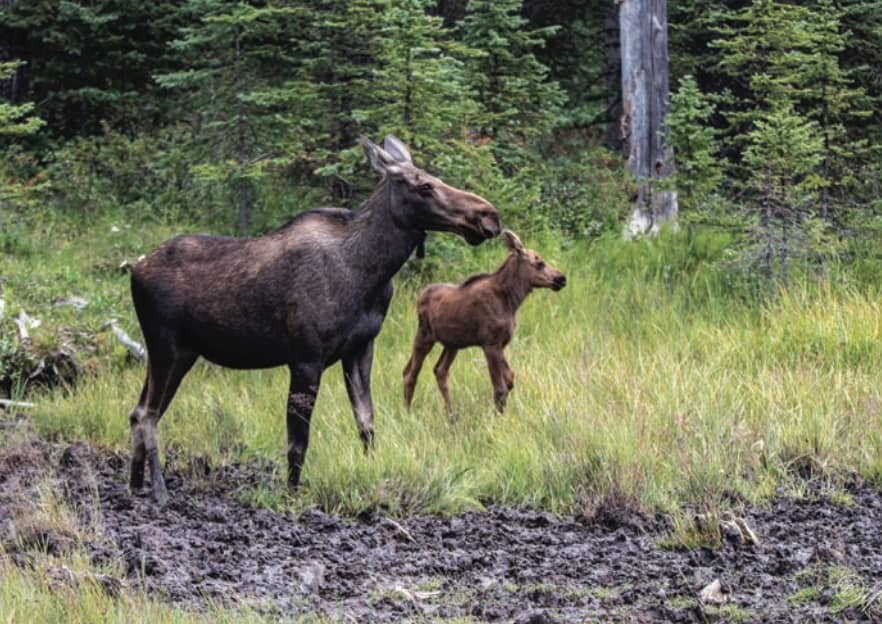
In the spirit of Canada day, I thought we would celebrate the quintessential Canadian neighbour. This dark brown mammal can swim faster than two men paddling a canoe, dive to depths of 20 feet, and is named for its love of devouring twigs. What trip to Canada is considered complete before a sighting of the majestic and mighty moose? If some of you were mislead by my clues and thought I was describing a beaver it is worth noting that the moose is also referred to as the most amphibious member of the deer family, or if you’re from Newfoundland a swamp donkey. They even have the same ability as a beaver to close their nostrils while eating under water. But why are these giants drawn to the water? We will get to that, but first let us talk about why they represent Canada in all seasons.
This is an animal that has always borne an indigenous name, as Moose comes from the Algonquin word Moz meaning twig eater. The moose’s iconic nose and lips are especially designed to wrap around and hold twigs in place before it slices through them with its teeth. Twigs from willows, shrubs and trees make up the majority of the moose diet, and they take their grazing to new ‘heights’. At the shoulder an adult moose can be just over or under two meters tall, but if they find the need they can stand on their hind legs and reach about four meters up to graze. Even without this trick I’ve watched many a moose in the backyard tilt their massive head back and casually graze the tops of the willows along the creekbank. Their height is also advantageous in winter when most food for herbivores is buried under the depths of the snow, the moose can easily navigate through snow up to a meter deep with its grey stilt-like legs nibbling the branches far out of reach of other members of the deer family. Other adaptations that allow the moose to embrace the chill of winter like a proud Canadian is its thick skin, warm winter coat of up to six inches long hair and low surface to volume ratio, all of which keep the cold at bay.
Being so well adapted to the cold means that come summer time you need to seek refuge from the heat. Moose do this by hanging out in shrubby forested areas, lakeshores and swamps. The water not only offers refuge from the heat, and parasites like ticks and horseflies, but also an important supplement to their diet in the form of mineral-rich aquatic plants, which they will gracefully dive to the depths to retrieve. If you have not yet had a chance to watch a moose swim paddling along with its massive cloven hooves, I would encourage you to look it up. This Canada day let us not ‘moose’ the opportunity to proudly embrace the magnificent moose neighbours we may encounter as patriotic emblems of the true north wild and free. May these elusive giants always find the room to wander in our wild spaces.

























